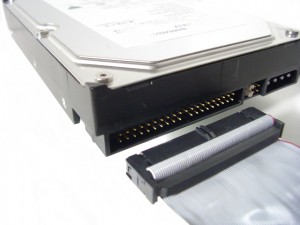Welcome back to my weekly update on my journey through the wilderness of OS development.
I’ve had a very enjoyable and productive week. I am still in the training phase of my internship but I can tell you now, within a few weeks, once I know enough about FlingOS, even more exciting things are going to be happening. Before I reveal more, let’s see what we’ve done this week.
Assembly to C
We have started the week by converting blocks of assembly code into C for the purposes of the upcoming tutorials in the context of memory and interrupts. The reason for this is that in the tutorial videos, equivalent implementations of the different development phases will be provided in three different languages; assembly, C and C#. This will be useful in seeing how each steps can be developed using the different languages, therefore you can decide which implementation suits your needs best.
We started by setting up the page directory and the page tables for the purposes of virtual memory management. Once that was achieved (after some frustration with pointers on my part) we set up memory to contain the kernel in the higher-half of the virtual memory space. This has advantages later when multiprocessing is desired. I learned about how to combine C code with assembly by the use of global procedures and data types as well as how one can use inline assembly to inject machine code directly into a C program. Mixing C with assembly can be useful as the implementation of certain tasks can be more straightforward in a high-level language. We have also spent some time setting up the Interrupt Descriptor Table entries in C. By working on this task with Ed, I learned, amongst other things, that the programmer can specify custom bit sizes for data types by using bitfield operators.
Getting to grips with C#
The second half of this week was spent on familiarising myself with C#. For this purpose, I have been looking at online tutorials on TutorialsPoint and on the Microsoft Developer Network site. I enjoyed learning about C#. It seems like a cool language to learn. I particularly like the documentation comment feature of the language. I think it’s very neat that you can leave comments in your code which then can be compiled into professional looking XML documentation resources. I also like the fact that C# is a type-safe language, so no need for pointers (yay from me). On the other hand, if you need to use pointers, you can declare “unsafe” blocks in your code where you can make use of them.
Plans for next week
Next week, I am going to be learning about the structure of the FlingOS compiler. I will be familiarising myself with the internal workings of the compiler by tweaking different parts of it and observing the output it produces. I will be able to put my newly found C# knowledge into good use since the compiler is written in this language. I will also be looking into how the compiler translates C# code into Intermediate Language code and how that IL code is translated into machine instructions. I am looking forward to tweaking the compiler to learn more about FlingOS and its internal workings. So, back to the exciting things I mentioned at the beginning of the post!
“Things are going great, and they’re only getting better”
Within the next few weeks, we are hoping to get started with porting a scaled down version of FlingOS onto our sponsor’s Creator CI20 development board. This means the translation of the existing x86 based code into code suitable for the MIPS32 architecture. A large part of the translation process involves converting CISC assembly instructions (x86) to RISC machine code used by MIPS32. Porting FlingOS onto the Ci20 board will be an exciting challenge and I will provide you with the details once we get started so you can consider developing your own OS on this great piece of kit.
That’s it from me, please come back next week for more info.
Roland




